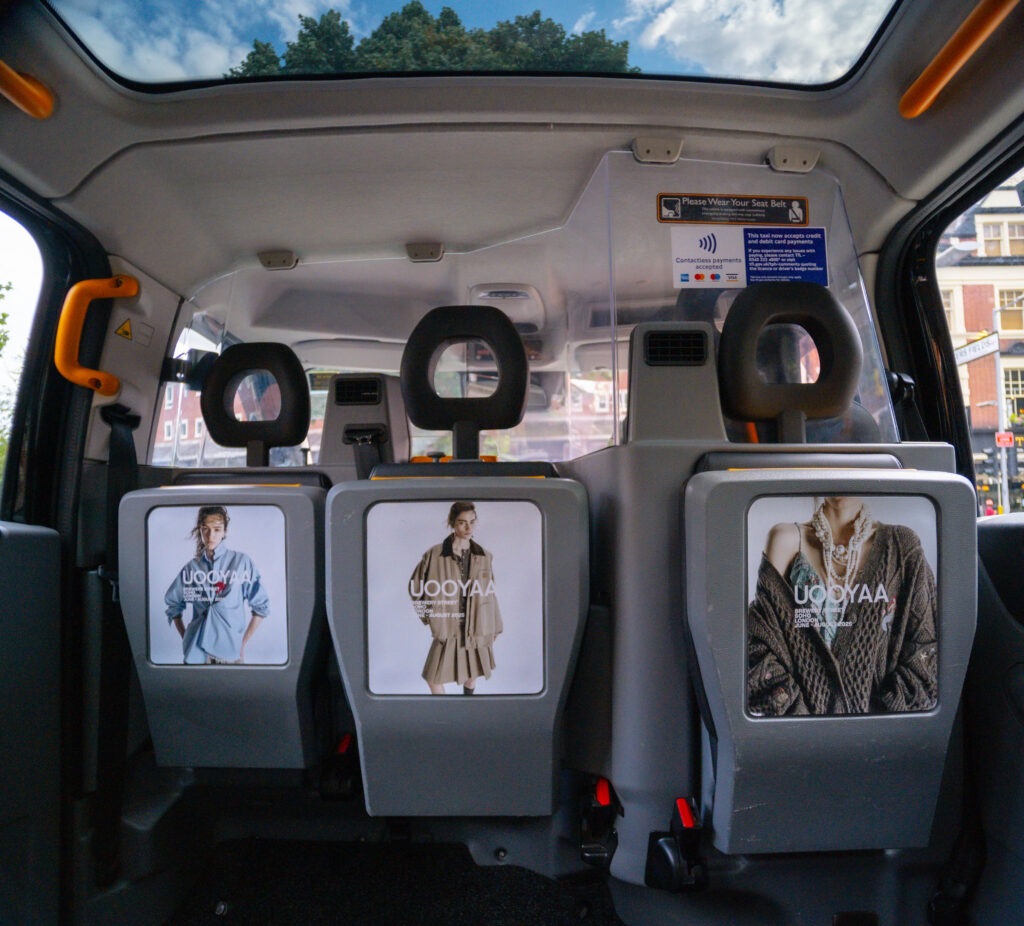Out-of-home (OOH) advertising is a dynamic landscape that keeps evolving with urban trends, consumer habits, and technology. While billboards, bus shelters, and street posters are staples, taxi advertising now sits at the forefront of OOH. Due to its agility, visibility, and ability, it is more capable of reaching
audiences at eye-level as they move across the city.
What Is OOH Advertising?
OOH advertising includes any visual advertising seen outside the home: billboards, transit ads, digital screens, posters, and branded vehicles. It’s designed to catch consumers on the move and create high-frequency brand recall.
Key OOH Formats

- Billboard Advertising: Fixed, high-impact, large-scale ads in strategic locations.
- Transit Advertising: Bus, train, Underground, and taxi ads move with audiences, covering wide urban and suburban areas.
- Street Furniture: Bus stops, benches, kiosks—all deliver community-level visibility.
- Digital OOH: Dynamic, location-based content on screens in high-footfall spaces.
Where Taxi Ads Stand Out in the Mix?
Taxi advertising is uniquely positioned within OOH for several reasons:
- Mobility and Coverage: Taxis aren’t static. They travel through every corner, hotspot, and business district, delivering your message where foot traffic and road traffic are highest.
- Eye-Level Engagement: Unlike high billboards or fast-moving buses, taxi ads operate at street level, ensuring all pedestrians, vehicle passengers, and drivers get a clear, direct view.
- Repeated Impressions: The average urban dweller may encounter the same branded cab numerous times throughout the day, amplifying campaign recall.
- Prestige and Trust: Branding on iconic black cabs is perceived as premium and authoritative, helping build business credibility in competitive markets.
Advantages of Taxi Advertising Over Other OOH Formats

- Flexible Targeting: Taxis allow for geographic saturation (focusing on boroughs, business zones, or shopping areas) or event-based campaigns for launches or festivals.
- Captive Interior Audiences: Interior formats like tip seat posters or digital screens engage passengers during their journey—ideal for more detailed messaging or offers.
- Agility: Taxi campaigns can be launched and adjusted quickly, with fleet numbers scaled up or down, making them perfect for brands testing the market or running short bursts.
Creative Ways Brands Use Taxi Ads
- Full Wraps: Turn cabs into moving billboards with striking, immersive graphics.
- Supersides and Rear Panels: Target traffic and pedestrians with bold visuals and direct calls-to-action.
- QR Codes: Bridge OOH with digital marketing by prompting instant engagement or app downloads.
- Experiential Activations: Use branded cabs for sampling, event transport, or social media challenges that turn every ride into an experience.
Why Taxi Ads Belong in a Modern OOH Strategy?
Taxi advertising integrates seamlessly into omnichannel marketing plans. It builds awareness, amplifies digital campaigns, and complements billboards and rail or bus media with high-frequency, direct city exposure.
For brands aiming to dominate urban environments, reach affluent professionals, or quickly test new concepts, taxi ads offer unmatched flexibility and impact. Whether you’re launching a product, growing local brand presence, or building prestige, they’re a modern must-have in every successful OOH mix.
FAQs
1. Are taxi ads more effective than billboards?
Taxi ads offer mobile, repeated exposure and engage audiences at street level, while billboards provide size and impact in static high-traffic locations. Both work best together in a multi-format OOH campaign.
2. What’s the best way to measure the success of taxi ad campaigns?
Brands use GPS route tracking, QR codes, and unique offers to gauge reach, frequency, and direct response, comparing campaign metrics with other OOH channels.
3. Can taxi ads target specific London areas?
Yes, fleets can focus on chosen business districts, shopping areas, or event venues, ensuring the ads are visible in prime locations for each campaign.
4. What creative formats work for taxi ads?
Full wraps, supersides, tip seats, digital screens, and QR code activations all drive impact. The best creative is bold, concise, and designed for quick street-level engagement.
5. Do taxi ads work for small businesses?
Absolutely. Taxi advertising’s flexible formats and scalable fleet options make it accessible and effective for local brands, startups, and larger companies alike.
